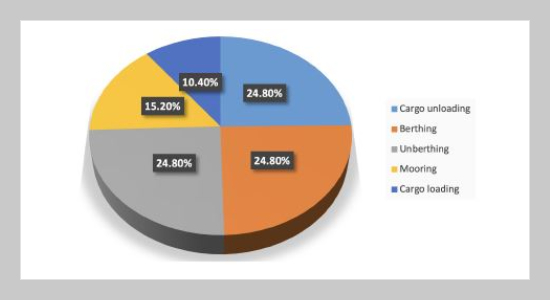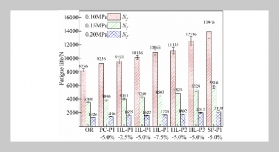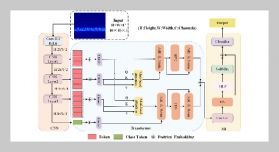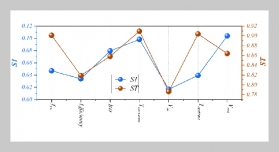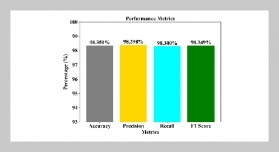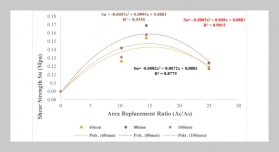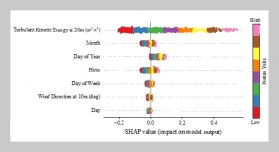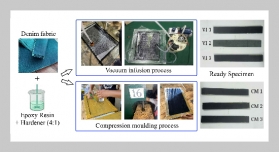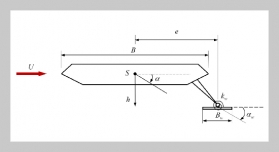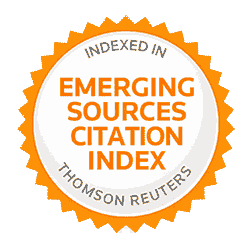REFERENCES
- [1] A. Ditta, O. Figueroa, G. Galindo, and R. Yie-Pinedo, (2019) “A review on research in transportation of hazardous materials" Socio-Economic Planning Sciences 68: 100665. DOI: 10.1016/j.seps.2018.11.002.
- [2] Ö. Eski and L. Tavacioglu, (2021) “Evaluation of port workers’ general awareness of dangerous cargo transport: a Turkish port example" Pomorstvo 35(2): 231–240. DOI: 10.31217/p.35.2.5.
- [3] J. Xiong, X. Jin, G. Dong, D. Gu, and C. Yi. “Risk Assessment of Ship Traffic Safety in PortWaters Based on AIS Data”. In: IOP Conference Series: Earth and Environmental Science. 638. 1. IOP Publishing. 2021, 012022. DOI: 10.1088/1755-1315/638/1/012022.
- [4] T. R. Walker, O. Adebambo, M. C. D. A. Feijoo, E. Elhaimer, T. Hossain, S. J. Edwards, C. E. Morrison, J. Romo, N. Sharma, S. Taylor, et al. “Environmental effects of marine transportation”. In: World seas: an environmental evaluation. Elsevier, 2019, 505–530.
- [5] J. Hakkinen and A. Posti, (2014) “Review of maritime accidents involving chemicals-special focus on the baltic sea" TRANSNAV-INTERNATIONAL JOURNAL ON MARINE NAVIGATION AND SAFETY OF SEA TRANSPORTATION 8(2): 295–305. DOI: 10.12716/1001.08.02.16.
- [6] M. Marchand, (2002) “Chemical spills at sea: case studies" Handbook of Hazardous Materials Spills Technology. McGraw-Hill, New York:
- [7] E. Mamaca, M. Girin, S. Le Floch, and R. El Zir. “Review of chemical spills at sea and lessons learnt”. In: White Paper for Interspill Conference & Exhibition 2009. Marseille: 12-14 May 2009. The 4th IMO R&D forum. A key international conference and exhibition for spill prevention preparedness, response and restoration. 2009. 40 p. 2009.
- [8] J. Chen, H. Zheng, L.Wei, Z.Wan, R. Ren, J. Li, H. Li, W. Bian, M. Gao, and Y. Bai, (2020) “Factor diagnosis and future governance of dangerous goods accidents in China’s ports" Environmental pollution 257: 113582. DOI: 10.1016/j.envpol.2019.113582.
- [9] L. Zhou, G. Fu, and Y. Xue, (2018) “Human and organizational factors in Chinese hazardous chemical accidents: A case study of the ‘8.12’Tianjin Port fire and explosion using the HFACS-HC" International journal of occupational safety and ergonomics 24(3): 329–340. DOI: 10.1080/10803548.2017.1372943.
- [10] B. Zhao, (2016) “Facts and lessons related to the explosion accident in Tianjin Port, China" Natural Hazards 84(1):707–713. DOI: 10.1007/s11069-016-2403-0.
- [11] P. Huang and J. Zhang, (2015) “Facts related to August 12, 2015 explosion accident in T ianjin, C hina" Process Safety Progress 34(4): 313–314. DOI: 10.1002/prs.11789.
- [12] W. Hua, J. Chen, Q. Qin, Z. Wan, and L. Song, (2021) “Causation analysis and governance strategy for hazardous cargo accidents at ports: Case study of Tianjin Port’s hazardous cargo explosion accident" Marine Pollution Bulletin 173: 113053. DOI: 10.1016/j.marpolbul.2021.113053.
- [13] R. U. Khan, J. Yin, F. S. Mustafa, and S. Wang, (2022) “Analyzing human factor involvement in sustainable hazardous cargo port operations" Ocean Engineering 250: 111028. DOI: 10.1016/j.oceaneng.2022.111028.
- [14] R. U. Khan, J. Yin, F. S. Mustafa, and A. O. A. Farea, (2022) “A data centered human factor analysis approach for hazardous cargo accidents in a port environment" Journal of Loss Prevention in the Process Industries 75: 104711. DOI: 10.1016/j.jlp.2021.104711.
- [15] Q. Lihong, Z. Xiaoqing, S. YouPing, and Z. Yuxing. “Analysis of Marine environmental impact of shipping bulk liquid chemical spills”. In: IOP Conference Series: Earth and Environmental Science. 734. 1. IOP Publishing. 2021, 012018. DOI: 10.1088/1755-1315/734/1/012018.
- [16] A. Galieriková, A. Dávid, M. Materna, and P. Mako, (2021) “Study of maritime accidents with hazardous substances involved: comparison of HNS and oil behaviours in marine environment" Transportation research procedia 55: 1050–1064. DOI: 10.1016/j.trpro.2021.07.182.
- [17] O.-V. E. Sormunen, F. Goerlandt, J. Häkkinen, A. Posti, M. Hänninen, J. Montewka, K. Ståhlberg, and P. Kujala, (2015) “Uncertainty in maritime risk analysis: extended case study on chemical tanker collisions" Proceedings of the Institution of Mechanical Engineers, Part M: Journal of Engineering for the Maritime Environment 229(3): 303–320. DOI: 10.1177/1475090213515640.
- [18] P. C. Chu and K. Kyriakidis. Chemical spill characteristics in the San Diego Bay. Tech. rep. NAVAL POSTGRADUATE SCHOOL MONTEREY CA NAVAL OCEAN ANALYSIS and PREDICTION LAB, 2011. DOI: 10.4031/mtsj.45.2.5.
- [19] G. Zhang, T. Ding, G. Zhan, X. Du, and D. Yan. “Early Warning and Source Identification System Design for Chemical Spill Incidents of Jinhua River”. In: IOP Conference Series: Earth and Environmental Science. 787. 1. IOP Publishing. 2021, 012185. DOI: 10.1088/1755-1315/787/1/012185.
- [20] A. Abascal, G. Aragón, M. Gonzalez, B. Pérez-Díaz, J. Bárcena, A. Martínez, L. Pedraz, J. García-Alba, A. Largo, B. Lamothe, A. García, and R. Medina. “An Operational System to Forecast Marine and Atmospheric Pollution from Chemical Spills in Harbour Areas: A Case Study at Huelva Estuary”. In: Cited by: 0. 2022, 499–513.
- [21] J. Donald, S. Zigic, C. Lemckert, and N. Benfer. “Chemical spill assessment carried out for the Derwent river, Tasmania”. In: Coasts and Ports 2009: In a Dynamic Environment. Engineers Australia [Wellington, NZ], 2009, 330–336.
- [22] G. Dwarakish, G. Srinikethan, U. Natesan, et al. “Terrestrial chemical spill information system through remote sensing, GIS, and VB 6.0”. In: Remote Sensing of Inland, Coastal, and OceanicWaters. 7150. SPIE. 2008, 217–227. DOI: 10.1117/12.805790.
- [23] J. Jiang, F. Dong, R. Liu, Y. Yuan, et al., (2017) “Applicability of Bayesian inference approach for pollution source identification of river chemical spills: a tracer experiment based analysis of algorithmic parameters, impacts and comparison with Frequentist approaches." China Environmental Science 37(10): 3813–3825.
- [24] R. Fernandes, R. Neves, F. Braunschweig, and D. Brito. “A new modelling toolkit for managing oil and chemical spills in Western Europe and Morocco’s Atlantic coast: the Lisbon Agreement and MARPOCS Project”. In: Proceedings of the Thirty-Ninth AMOP Technical Seminar on Environmental Contamination and Response. Environment Canada. 2016.
- [25] L. Li, B. Wang, and A. Wang, (2014) “An emergency resource allocation model for maritime chemical spill accidents" Journal of Management Analytics 1(2): 146–155. DOI: 10.1080/23270012.2014.943137.
- [26] R. U. Khan, J. Yin, and F. S. Mustafa, (2021) “Accident and pollution risk assessment for hazardous cargo in a port environment" PLoS one 16(6): e0252732. DOI: 10.1371/journal.pone.0252.
- [27] C. Huang, Y. Bai, and L. Lu. “Hazard Analysis and Quantitative Risk Assessment of Port Operation for Dangerous Goods Container”. In: IOP Conference Series: Materials Science and Engineering. 780. 7. IOP Publishing. 2020, 072027. DOI: 10.1088/1757-899X/780/7/072.
- [28] C. Huang, Y. Bai, and L. Lu. “Quantitative Risk Assessment of Dangerous Goods Container Port”. In: IOP Conference Series: Earth and Environmental Science. 580. 1. IOP Publishing. 2020, 012094. DOI: 10.1088/1755-1315/580/1/012094.
- [29] R. U. Khan, J. Yin, F. S. Mustafa, and N. Anning, (2021) “Risk assessment for berthing of hazardous cargo vessels using Bayesian networks" Ocean & Coastal Management 210: 105673. DOI: 10.1016/j.ocecoaman.2021.105673.
- [30] J. Geng and Y. Hu. “Research of 3D Simulation of Dangerous Goods Accident in Port”. In: IOP Conference Series: Earth and Environmental Science. 693. 1. IOP Publishing. 2021, 012101. DOI: 10.1088/1755-1315/693/1/012101.
- [31] Q. Jianzhe, S. Youping, and Z. Junjie. “Simulation Analysis on Dangerous Goods Accident in Container Terminals”. In: E3S Web of Conferences. 206. EDP Sciences. 2020, 03004. DOI: 10.1051/e3sconf/202020603004.
- [32] T. Xie, X. Lu, G. Wang, and F. Lin. “Research on Safety Risk, Prevention and Control in Port Dangerous Goods Container Yard”. In: Journal of Physics: Conference Series. 1910. 1. IOP Publishing. 2021, 012029. DOI: 10.1088/1742-6596/1910/1/012029.
- [33] G. B. Generalis, K. Wong, and J. Mylonakis, (2007) “The relative economic impact of industrial chemical spills on entrepreneurship: The case of coast pollution in the USA" European Journal of Scientific Research 16(3): 395–399.
- [34] S.-W. Hsiao and H.-C. Tsai, (2004) “Use of gray system theory in product-color planning" Color Research & Application 29(3): 222–231. DOI: 10.1002/col.20009.
- [35] J. Chen, W. Zhang, S. Li, F. Zhang, Y. Zhu, and X. Huang, (2018) “Identifying critical factors of oil spill in the tanker shipping industry worldwide" Journal of Cleaner Production 180: 1–10. DOI: 10.1016/j.jclepro.2017.12.238.
- [36] A. Shemshadi, H. Shirazi, M. Toreihi, and M. J. Tarokh, (2011) “A fuzzy VIKOR method for supplier selection based on entropy measure for objective weighting" Expert systems with applications 38(10): 12160–12167. DOI: 10.1016/j.eswa.2011.03.027.
- [37] H. Zhang, C.-L. Gu, L.-w. Gu, and Y. Zhang, (2011) “The evaluation of tourism destination competitiveness by TOPSIS & information entropy–A case in the Yangtze River Delta of China" Tourism Management 32(2): 443–451. DOI: 10.1016/j.tourman.2010.02.007.
- [38] L.-Y. Zhai, L.-P. Khoo, and Z.-W. Zhong, (2009) “Design concept evaluation in product development using rough sets and grey relation analysis" Expert systems with applications 36(3): 7072–7079. DOI: 10.1016/j.eswa.2008.08.068.
- [39] S. Chae and T. Yoshida, (2010) “Application of RFID technology to prevention of collision accident with heavy equipment" Automation in construction 19(3): 368–374. DOI: 10.1016/j.autcon.2009.12.008.
- [40] J. Chen,W. Bian, Z.Wan, S.Wang, H. Zheng, and C. Cheng, (2020) “Factor assessment of marine casualties caused by total loss" International journal of disaster risk reduction 47: 101560. DOI: 10.1016/j.ijdrr.2020.10156.
- [41] J. Li and Z. Huang, (2012) “Fire and explosion risk analysis and evaluation for LNG ships" Procedia engineering 45: 70–76. DOI: 10.1016/j.proeng.2012.08.123.
- [42] EMSA. Annual Overview of Marine Casualties and Incidents. 2020.
- [43] F. Paolo, F. Gianfranco, F. Luca, M. Marco, M. Andrea, M. Francesco, P. Vittorio, P. Mattia, and S. Patrizia, (2021) “Investigating the role of the human element in maritime accidents using semi-supervised hierarchical methods" Transportation research procedia 52: 252–259. DOI: 10.1016/j.trpro.2021.01.029.
- [44] C.-T. Tung and Y.-J. Lee, (2009) “A novel approach to construct grey principal component analysis evaluation model" Expert Systems with Applications 36(3): 5916–5920. DOI: 10.1016/j.eswa.2008.07.007.
- [45] EMSA. Action Plan for HNS Pollution Preparedness and Response. 2007.
- [46] A. Laflamme, J. Lamoureux, K. Quintin, and S. Le Floch. “Understanding Chemical Pollution at Sea”. In: International Oil Spill Conference Proceedings. 2014. 1. American Petroleum Institute. 2014, 299897.
- [47] A. Mullai and E. Larsson, (2008) “Hazardous material incidents: Some key results of a risk analysis" WMU Journal of Maritime Affairs 7(1): 65–108. DOI: 10.1007/BF03195126.
- [48] R.-M. Darbra and J. Casal, (2004) “Historical analysis of accidents in seaports" Safety science 42(2): 85–98. DOI: 10.1016/S0925-7535(03)00002-X.
- [49] A. Ronza, S. Félez, R. Darbra, S. Carol, J. Vılchez, and J. Casal, (2003) “Predicting the frequency of accidents in port areas by developing event trees from historical analysis" Journal of loss prevention in the process industries 16(6): 551–560. DOI: 10.1016/j.jlp.2003.08.010.
- [50] A. Pagiaziti, E. Maliaga, E. Eliopoulou, G. Zaraphonitis, and R. Hamann. “Statistics of collision, grounding and contact accidents of passenger and container ships”. In: Proceedings of the 5th International Symposium on ship Operations, Management and Economics (SOME), Athens, Greece. 2015, 28–29.
- [51] H. L. Hansen, D. Nielsen, and M. Frydenberg, (2002) “Occupational accidents aboard merchant ships" Occupational and environmental medicine 59(2): 85–91. DOI: 10.1136/oem.59.2.85.


